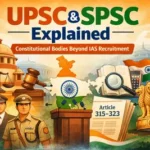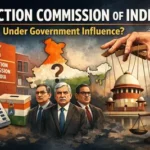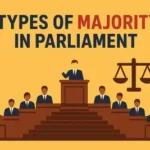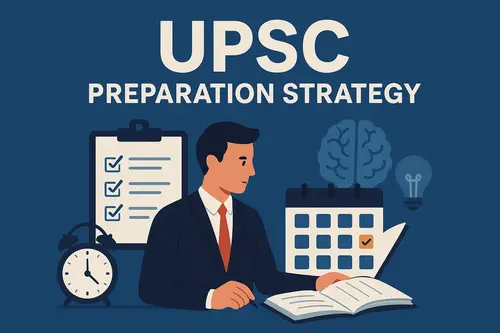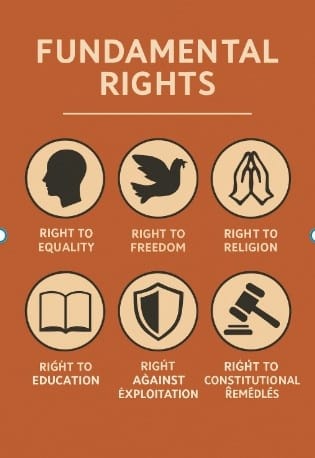
The Fundamental Rights enshrined in the Indian Constitution represent the elemental freedoms entitled to every citizen to protect dignity, equality, and freedom. Stored in Part III (Articles 12-35), the rights allow citizens to be shielded from arbitrary state actions and are the substance of Indian democracy.
Today, there are six Fundamental Rights available in India (originally seven) covering equality, freedom, protection against exploitation, freedom of religion, cultural and education rights, and the Right to Constitutional Remedies. These rights are justiciable, which means that they are enforceable by citizens in the courts when they have violated.
They were referred to by Dr. B.R. Ambedkar as the “Conscience of the Constitution” because they represented the democratic ideals of the nation’s Constitution and secured every citizen’s human rights.
Origin & Inspiration of Fundamental Rights in India
The source and inspiration of Fundamental Rights in India are derived from many sources, one of the prominent sources is the American Bill of Rights (1791). The framers of the Indian Constitution studied all the democratic constitutions of the world to secure the liberties of citizens through the law.
- American Bill of Rights – The Bill of Rights introduced guaranteed individual freedoms such as freedom of speech, freedom to practice one’s religion, and equality before law.
- French Revolution (1789) – The ideals of liberty, equality, and fraternity of the French Revolution formed the philosophical basis of rights.
- British Constitutional Traditions – The concepts of parliamentary supremacy and the rule of law left an indirect impact on the Indian framework.
- Indian National Movement – The demands for civil liberties and equal treatment during the colonial period through various movements like the Karachi Resolution (1931), indicated the pretext for constitutional rights inclusion of rights.
List of Fundamental Rights in India (Articles 12 to 35)
The Fundamental Rights in India, enshrined in Part III of the Constitution (Articles 12–35), guarantee essential freedoms and protections to every citizen. These rights ensure dignity, equality, and justice, forming the backbone of Indian democracy.
Here’s the list of 6 Fundamental Rights with their respective articles:
| Fundamental Right | Articles | Key Provisions |
|---|---|---|
| 1. Right to Equality | Articles 14–18 | Equality before law, prohibition of discrimination, equality of opportunity, abolition of untouchability and titles. |
| 2. Right to Freedom | Articles 19–22 | Freedom of speech, expression, assembly, movement, residence, profession; protection in respect of conviction; protection of life and personal liberty; rights of arrested persons. |
| 3. Right Against Exploitation | Articles 23–24 | Prohibition of human trafficking, forced labour, and employment of children in hazardous jobs. |
| 4. Right to Freedom of Religion | Articles 25–28 | Freedom of conscience, free profession, practice and propagation of religion; freedom to manage religious affairs; no religious instruction in certain educational institutions. |
| 5. Cultural and Educational Rights | Articles 29–30 | Protection of interests of minorities; right of minorities to establish and administer educational institutions. |
| 6. Right to Constitutional Remedies | Article 32 | Right to move the Supreme Court for enforcement of Fundamental Rights (heart and soul of the Constitution, per Dr. B.R. Ambedkar). |
Fundamental Rights in India vs US Bill of Rights – Key Differences
| American Bill of rights | Indian FRs |
|---|---|
| They were inserted through the Constitutional Amendment in 1791. | They were part of the original constitution. |
| They are relatively more absolute | They are more qualified and empower the state to impose reasonable restrictions. |
| Freedom of the Press is specifically mentioned. | There is no specific mention of Freedom of the Press. |
| There is no explicit provision in the American Constitution. | The Indian Constitution explicitly provides for Reservations in Article 15 (5), 15 (6), Article 16 (4), Article 16 (6) |
| The Provisions of Minorities are not explicitly provided in the American Constitution | Article 30 explicitly recognizes the Rights of Linguistic and Religious minorities. |
| 10 rights in the Bill of Rights. | 6 Fundamental Rights after the 44th Amendment (originally 7). |
Hierarchy of Rights: Fundamental vs Constitutional vs Statutory
Rights in India are organized in a three-layer hierarchy, with Fundamental Rights at the top in following manner-
- Fundamental Rights
Source: Part III of the Constitution (Articles 12 – 35)
Enforceability: Direct enforcement in the Supremes Court (Art. 32) and in Courts as well; High Courts (Art. 226)
Examples: Right to Equality (Art. 14), Right to Life (Art. 21)
Position in Hierarchy: Highest – Not subject to ordinary laws must be amended through special will amend an ordinary law.” - Constitutional Rights (Non-Fundamental)
Source: Other parts of the Constitution
Enforceability: Enforceable in Courts; enforcement to the exemption of special Part III protection;
Examples: Right to vote (Art. 326), Right to Property (Art. 300A)
Position in Hierarchy: Below Fundamental Rights but higher than Statutory Rights. - Statutory Rights
Source: Conferred through Acts of Parliament or State Legislatures.
Enforceable: Courts enforce them, but legislation can alter or repeal them.
Examples: Right to Information (RTI) (RTI Act, 2005), Right to Work (MGNREGA).
Position in the Hierarchy: Lowest, subject to repeal by majority legislation.
Landmark Cases on Fundamental Rights in India
Interpretation of Fundamental Rights in India has occurred since landmark judgments of the Supreme Court of India. It has defined the boundary of scope, limitations, and relationship between rights and the State.
Kesavananda Bharati v. State of Kerala (1973)
Key Principles: Basic Structure Doctrine – while Parliament can amend any part of Constitution, it cannot change the basic structure relating to the Constitution.
Impact upon Fundamental Rights: Fundamental Rights are part of the basic structure, and no amendment may destroy them.
Maneka Gandhi v. Union of India (1978)
Key Principles: expanded the interpretation of Article 21 (Right to Life and Personal Liberty).
Impact upon Fundamental Rights: “Life” includes more than mere living in animal existence, it includes dignity, right to move, relevant to fair legal procedures.
Indira Gandhi v. Raj Narain (1975)
Key Principles: Judicial review cannot be taken away, not even by constitutional amendment.
Impact upon Fundamental Rights: Executive power must be balanced to citizen rights.
I.R. Coelho v. State of Tamil Nadu (2007)
Key Principle: Laws placed in the Ninth Schedule after April 24, 1973 still subject to judicial review if they violate the basic structure.
Impact: Discouraged misuse of abuse of Ninth Schedule to circumvent Fundamental Rights
Puttaswamy v. Union of India (2017)
Key Principle: Left to Privacy declared a fundamental right under Article 21.
Impact: Promoted datarights and the individual’s liberty in a digitalized world.
Reasonable Restrictions on Fundamental Rights in India
Fundamental Rights are in the Constitution, but are not absolute rights. The framers of the Constitution fashioned a structure in which there was a balance between the interest of the individual to have liberty, and that of the state, protecting the wider public interest. Therefore we have reasonable restrictions to some given Fundamental Rights, meaning that the State can restrict Fundamental Rights only through laws thought to be fair, just, and proportionate and not laws that are arbitrary and excessive.
These restrictions must:
- Be in pursuance to a legitimate aim e.g., public order, security, morality.
- Be established by the authority of the law, excepting the executive authority.
- Not be able to withstand judicial review as to their fairness.
Grounds for Reasonable Restrictions – Article basis
- Article 19 – Freedom of Speech, Assembly, Movement etc. – each ceremony permits for restriction in the interest of:
- Sovereignty and integrity of India
- Security of the State
- Friendly relations with foreign States.
- Public Order
- Decency
2. Article 25 – Freedom of religion- Restrictions on the grounds of
- public order
- morality
- health
3. Article 22 – Preventive detention– Detention can be maintained for a period of three months without trial (only renewable for longer with the consent of an Advisory Board)
Restrictions in Emergency Situations
- National Emergency (Article 352)
Any rights under Article 19 that existed prior to the emergency are automatically suspended. Rights under Articles 20 and 21 survive in the instance of emergency. [Following the 44th Constitutional Amendment – 1978] - President’s Rule (Article 356)
Rights not automatically suspended but Parliament/President can legislate on a State List affecting rights. - Financial Emergency (Article 360)
Rights are not suspended but economic measures may affect freedoms (indirectly)
Fundamental Rights UPSC – Key Notes for Quick Revision
The topic of Fundamental Rights is one of the most important topics in UPSC Prelims and Mains. It lies at the very core of Indian Polity. Year on year questions are asked directly from the Constitution (Articles 12 – 35), landmark judgments, and the reasonable restrictions.
Why are Fundamental Rights important for UPSC?
- Static + Current affairs link : Rights are static in the Constitution and will remain so, but the interpretation of these rights will vary depending on the Supreme Court judgment or amendments made in the future.
- Interdisciplinary coverage: Links to Governance, Ethics, International relations (UN Human Rights etc.).
- High weightage: Questions on Fundamental Rights are commonly asked, in both the Mains and especially in the prelims (MCQs).
How does UPSC ask questions on Fundamental Rights?
In Prelims:
- Match-the-following (Article ↔ Right)
- Exceptions and restrictions
- Case laws (Important ones, such as, Kesavananda Bharati, Maneka Gandhi)
- Features borrowed from other constitutions (such as from the American Bill of Rights)
Some tips for UPSC preparation of Fundamental Rights
- Memorize Articles 12 – 35 with a mnemonic (for example, “Some Teachers Choose Daily Delicious Fruit Rice” for Six Fundamental Rights).
- Read Laxmikanth Polity atleast twice (read this Chapter on Fundamental Rights).
- Make a table of every right, its scope, the restrictions, and the landmark cases.
- Follow current affairs that are related to the Supreme Court ruling in Fundamental Rights cases.
- Practice PYQs (Past Year Questions) so you can see the kind of twist UPSC has in framing the questions.
For full UPSC Course subscribe to https://infotrigg.com/
